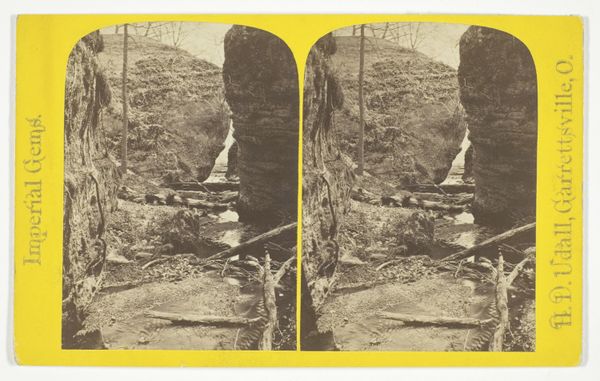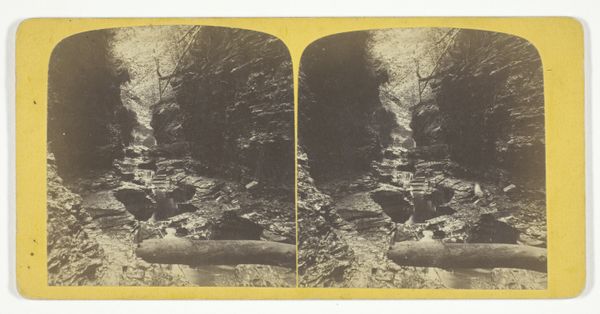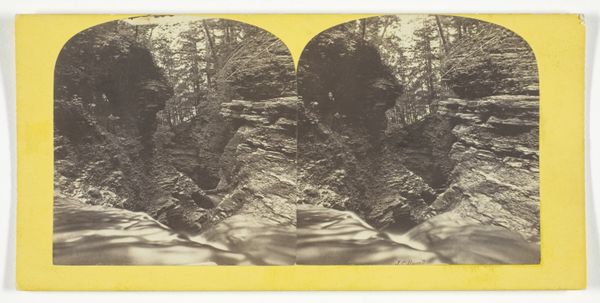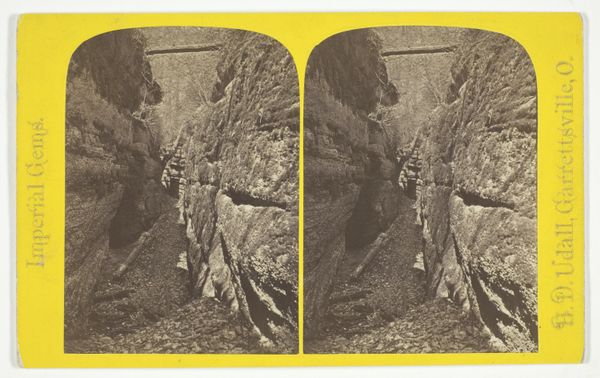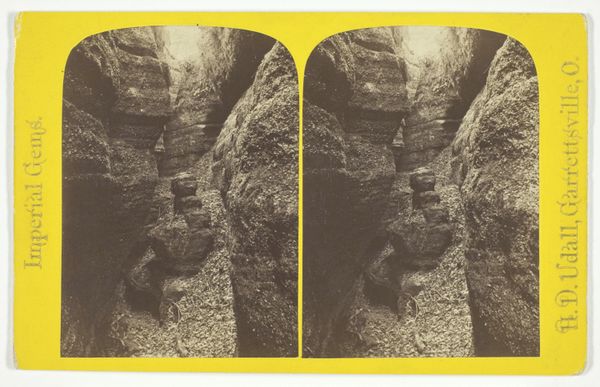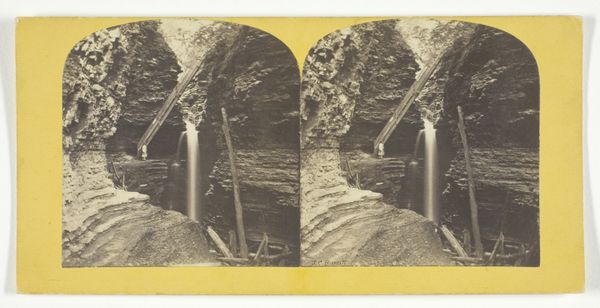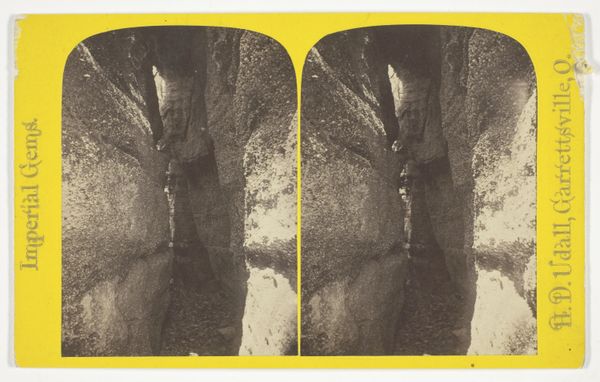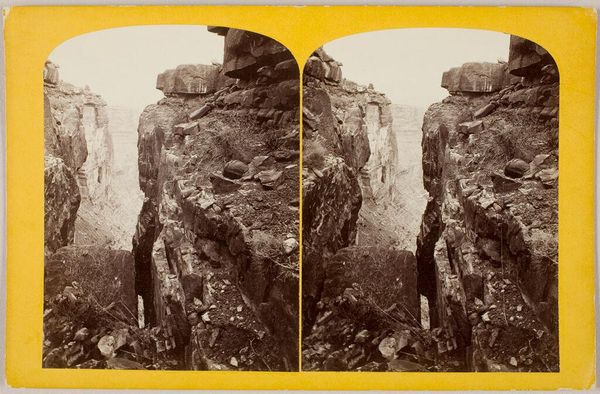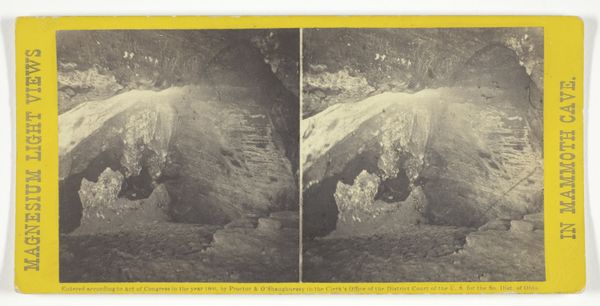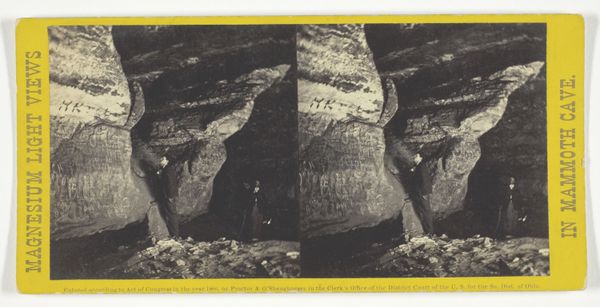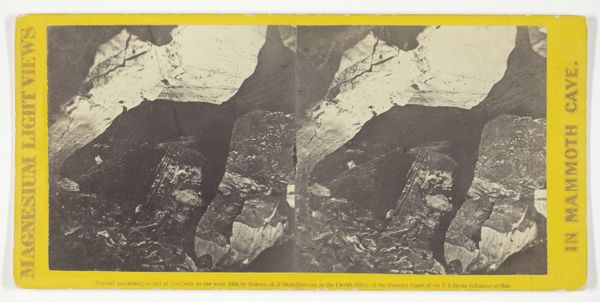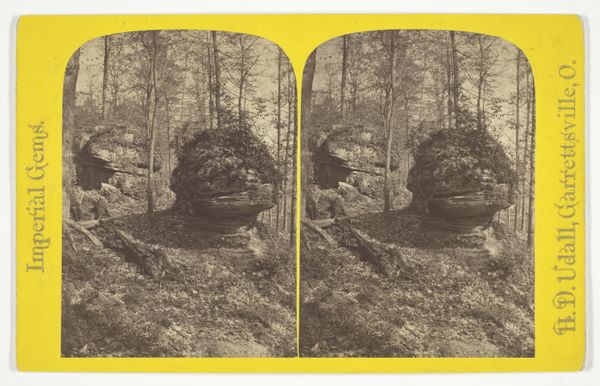
photography, gelatin-silver-print
#
16_19th-century
#
pictorialism
#
landscape
#
photography
#
gelatin-silver-print
Dimensions: 10.1 × 7.2 cm (each image); 11 × 17.8 cm (card)
Copyright: Public Domain
Editor: So, here we have H.D. Udall’s “Furnace Rock,” a gelatin silver print made sometime between 1875 and 1899. It's a compelling landscape; very grounded and still. How do you interpret this work? Curator: It’s important to consider the historical context. Late 19th-century landscape photography often romanticized nature, subtly reinforcing notions of national identity and expansion. Udall's image, with its dramatic rock formations, also participates in this visual rhetoric. I see an idealized version of the American landscape—perhaps a symbol of strength and resilience during a period of rapid industrialization. It evokes a very masculinist idea. What do you think about this aesthetic? Editor: I can see that, it does feel staged and controlled, as though the composition itself is projecting those values. But what about its role as a document? Doesn’t photography claim to capture things as they are? Curator: Ah, there's the crux of the issue. While photography offers a seemingly objective view, the photographer's choices—framing, lighting, printing techniques—always mediate our perception. Pictorialism, to which this work gestures, further complicates the matter, as its focus lay more on the artistic sensibility rather than mere documentation. The very idea of ‘landscape’ itself is always already imbued with cultural meaning and, inevitably, with power dynamics. It begs the question, whose land is being photographed, and for whom? Editor: That's a powerful point. The image, therefore, acts as both a celebration and a potential erasure of different histories and lived experiences tied to that specific space. Curator: Exactly. This photo reminds us to critically examine not only what is visible, but what remains unseen. The artist inevitably omits part of a reality and presents its own selected truth. Editor: I hadn’t considered how a landscape photo could be an argument. Thank you for widening my view! Curator: And thank you for the important reminder of photography's complex relationship to objectivity and truth!
Comments
No comments
Be the first to comment and join the conversation on the ultimate creative platform.
